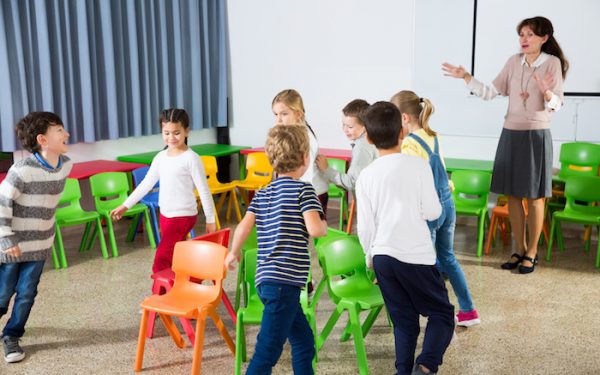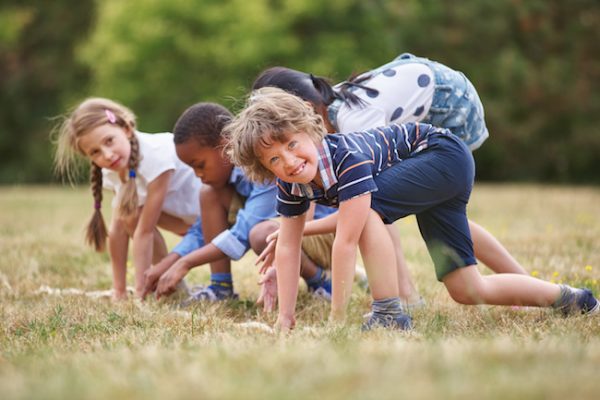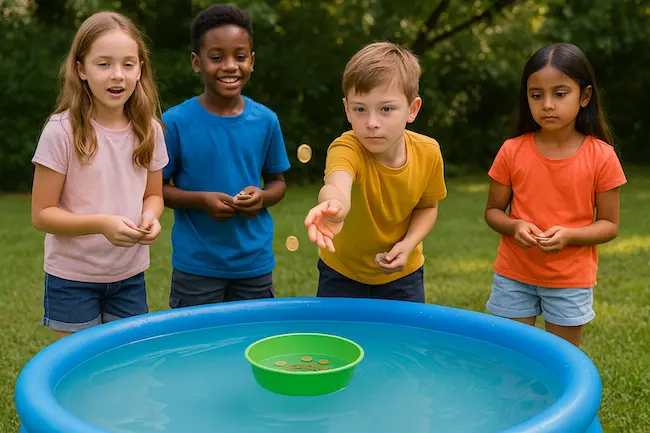Sleeping Lions Game: A Quiet Challenge Full of Laughter
Looking for a calm yet hilarious group activity for kids’ parties or classroom breaks? Sleeping Lions is the perfect choice. This classic game combines humor, strategy, and self-control, and is great for groups of kids ages 6 and up. With no equipment needed and simple rules, it’s an ideal choice for indoor or outdoor play.
Game Sheet
This quick-reference guide gives you all the essentials for setting up the game:
- Number of players: Minimum of 6 children
- Ages: 6 years and older
- Setting: Indoors or outdoors
- Materials needed: None
- Play time: Around 10 minutes
Sleeping Lions is easy to set up and requires no props—just a good sense of humor and a bit of imagination.
Step into the past and future with this imaginative time-traveling adventure game for kids, full of challenges and surprises.
How to Play Sleeping Lions
Set the tone of the game by explaining the roles clearly. Here’s how to organize it:
- Choose the Hunter: Select one child to be the “hunter.” Their job is to make the other kids laugh or move—without ever touching them.
- Sleeping Lions Lie Down: All other players lie down on the floor like “sleeping lions,” remaining perfectly still and silent.
- Start the Game: The hunter walks around, telling jokes, making silly faces, dancing, or imitating animal sounds to get reactions. No physical contact is allowed.
- Awakening the Lions: If a lion laughs, giggles, or moves, they become part of the hunter team.
- Winning the Game: The last remaining lion who hasn’t moved wins the round.
This mix of stillness and silliness creates a fun and challenging experience for kids of all personalities.
Get kids moving and thinking with this engaging traffic cop movement game for kids, perfect for active group play.
Fun Variations to Keep the Game Fresh
If you plan to play multiple rounds or want to increase the challenge, try one of these versions:
- Blindfolded Hunter: Adds difficulty and heightens the sensory fun.
- Silent Hunter: Only gestures allowed—no speaking!
- Team Challenge: Start with two hunters working together.
- Strategic Lions: Let lions adjust their position slowly for more dynamic play.
- Reverse Focus: Have multiple hunters team up to get one lion to react.
These twists add replay value and allow you to adapt the game to different age groups or event themes. Turn up the energy at your next party with the hilarious pop-up party game The Toaster, full of surprises and laughter!
Why Kids Will Love This Game
Sleeping Lions is both funny and relaxing—a rare combo. Kids love the challenge of holding still while someone tries to crack them up. It’s also great for shy kids who want to participate quietly or those who enjoy making others laugh without the pressure of competition.
Educational Benefits of Sleeping Lions
This simple game offers rich learning opportunities without feeling educational:
- Encourages Emotional Control: Kids learn to manage giggles and stay still under pressure.
- Develops Social Skills: Through non-verbal communication and shared laughter.
- Boosts Imagination: Hunters get creative with jokes, stories, and body language.
- Builds Self-Confidence: Participating in playful, low-risk situations improves comfort in group settings.
- Improves Focus and Listening: Staying still and alert builds attention spans.
By blending movement with mindfulness, this game supports both physical and emotional development.
Get kids moving with the classic Four Corners movement game for groups, perfect for indoor fun and quick thinking!
Frequently Asked Questions
- Can younger kids play too?
Yes. With simple rules and slow pacing, even kids as young as 4 can enjoy the game. - What if some children don’t like being still?
Offer short rounds, and let them take turns being the hunter. - Can we play in small spaces?
Absolutely. Just adjust the number of players or play in shifts. - How do I make the game more dynamic for older kids?
Use blindfolds, props, or team play to increase difficulty.
Let your event shine with simple games like this that are easy to organize and fun for everyone. Rediscover strategy and reflexes with this fun Rock Paper Scissors challenge for kids, ideal for quick play and party laughs!
Explore More Engaging Ideas for Kids’ Parties
Discover more unique and original group activities in our full collection of alternative kids games, perfect for any occasion.
Or take your celebration to the next level with our printable escape room kits and mystery games: ready-to-use PDF adventures designed for children ages 4 to 12.






